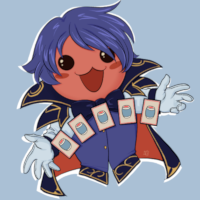Inglorious bastardization.
I would argue that Aliens – specifically the 1986 James Cameron classic and not the entire, uneven franchise – has influenced gaming more than Star Wars. From Space Hulk to DOOM to Nemesis, the ideas, concepts, scenarios, from the film are as gameable and inspirational as the Battle of the Bulge were for earlier generations of grognards. There aren’t exactly a lot of Aliens-branded games however, and Gale Force 9 is giving it a go with Aliens: Another Glorious Day in the Corps. Designed by Andrew Haught (who also helmed the disappointing Doctor Who: Time of the Daleks), the game somehow manages to give us exactly the dungeoncrawl-y Aliens experience we always wanted while also landing with a sloppy thud like a Xeno ripped apart by pulse rifle fire. It breaks my heart to state that it is one of the most unrefined and poorly executed games that I’ve played in recent memory. I was excited about this game given GF9’s mostly stellar track record with licensed properties but I’m left actually more disappointed than I was with their Doctor Who game.
Now, I want to be clear that for the first couple of games, I was ensorcelled by the Aliens livery. I was repeating the quotes as prompted by the cards, I was letting out a Vasquez “let’s rock” when unloading a smartgun into a horde of Xenos. We saved Newt at Hadley’s Hope and escaped in the APC. It felt like Aliens – and it seemed like the endurance card mechanism, which finds players exhausting cards out of a deck that also acts as a timer with every shot, was a strongly conceptual piece of design that captured the desperation of the situation on LV426. It was fun to see the plastic aliens (which come on sprues and you have to glue together) swarming the board, and since it uses the classic Space Hulk blips in concert with a stack of Motion Detector cards to hide exactly how many monsters are spawning and coming to kill you there was some great tension and drama.
But then I found that I was struggling to actually enjoy the design, despite responding favorably to the subject matter. It was chafing my sensibilities despite it being a fairly standard dungeoncrawler, a genre which I tend to be amenable to as long as it’s done well. I started noticing irritants – like how the whole game is low roll except for when aliens try to break a barricade, and then it’s roll high. Designers – never do this. It’s one or the other. I wasn’t really feeling how the game scales – if you play with less than a full complement of marines, some of them are resigned to “Grunt” status and have lower stats and abilities, to be ordered around by players that have a rank value if they are military (which is to say everyone but Ripley and Newt). Then I started getting annoyed by some of the nomenclature, like how each character has an Aim dial which tracks a metric that is really more like “Nerves” or “Resolve” or “Frostiness”. Why else would Ripley have one of the highest “Aim” stats? I noticed that in some scenarios, there were characters who best served the team by simply repeating the Rest action, which allows for card draws from the Endurance deck, which also includes all of the equipment, events, and occasional hazards while also recycling cards back into it from the exhausted pile, thus slowing down the internal clock.
And that Endurance deck – it’s just incredibly gamey, and you’ve got cards getting Revealed, Exhausted, Reshuffled, Discarded, held in hand, played out of hand, equipped to others, then someone rifles through the exhausted pile to find a card- the whole scheme feels entirely over-complicated and fussy. Worse, because running out the Endurance deck after a full reshuffle ends the game, it seems almost as if managing this deck and all these card states is really the focus of the game moreso than the on-board play. Yes, you move miniature marines around the board, barricade doors, set up sentry guns, and all that fun stuff. But it all loops back to this Endurance card thing and managing these card states.
There are elements of the card mechanisms that I really like – if you shoot a pulse rifle, you have to exhaust a card. It has a Full Auto keyword, so you can choose to exhaust another card and keep doing that to keep shooting. But then if you are firing with a smartgun (and are not Vasquez), you are tossing three cards into the exhausted pile so when you are gunning down a lot of Aliens, shit can go south really quick. This neatly simulates limited ammo and it’s even better that with every shot that “Aim” stat (whatever it actually means) goes down, and that’s your to-hit number. So as the situation gets more desperate and the Aliens get thicker, you hit less and start running out of bullets and then when it’s the Alien turn, you might find yourself on the back heel with a low Aim number trying to fire your Overwatch shots at 10 Aliens moving in on your position or you might be so shaken that you have trouble hitting the Aliens about to eat Newt. But you might be fortunate enough to have a backup pistol or shotgun (for close encounters, of course) that have a base Aim number overriding your character’s Aim dial. This stuff is all pretty neat, no doubt.
But the really exciting moments are few and far between. The narrative scenarios are straight from the movie and they were OK if obvious. There are also a number of “Bug Hunt” missions wherein the marines have no objective other than to survive the entire Motion Tracker deck and every spawn that is thrown at them – a pretty daunting task given that each player draws one or more of these cards every round. But in these Bug Hunt games where there is not a narrative objective, I’ve found play to be boring, static, and undynamic. You barricade the doors, which requires a Tech skill roll, and sort of hunker down – which means resting to draw cards and look for weapons and armor to suit everyone up. For like, five rounds if you roll low on the Blip movement. The scenario design as a whole is not good, especially considering the more compelling games of this type that are available that offer more story-driven or campaign-driven setups.
And that is another issue. Had this game come out in the late 1980s or early 1990s, I’d say that it would have been more of a success but then again, there were already games like perennial genre high mark Space Hulk, Mutant Chronicles: Siege of the Citadel, and others available that captured some of Aliens’ spirit. These days we have Space Marines Adventures: Labyrinth of the Necrons which could easily be reskinned as a superior Aliens game. There’s Nemesis on the high end of detail and price and FFG’s excellent 2016 version of DOOM, which is still available and highly recommended. There’s also the incredible Free League Alien RPG and its cinematic module Destroyer of Worlds, which is almost the perfect Aliens game.
It's all just so unrefined, that is the word I keep coming back to. It feels like the sign-off on the design and its production was at a “good enough” level rather than a “let’s make this something really special” one. The miniatures are OK but not great. The production is mediocre, but somewhat excused given that it is a $60 retail title. The rulebook isn’t very good and there is a lack of clarity between it and the cards – it’s the kind of thing where in the middle of the first session you are looking for the FAQ. The game is filled with tons of “waitaminute” moments where you’ve got to squint at the card and flip through the rulebook because it simply isn’t designed or presented on par with today’s’ best games.
But worse than all of that, like Doctor Who: Time of the Dalek this game doesn’t seem to understand exactly what players want from a board game experience featuring its IP. It’s almost as if there is a cynical assumption that the stills and card titles will carry a rather perfunctory, unrefined game to success with a fan audience. This is in sharp contrast to the GF9 designs of old – Spartacus, Firefly, and Star Trek: Ascendancy in particular – that seemed to be designed with a brief that prioritized recontextualizing themes, settings, and characters in ways that expanded their potential into the gaming space in creative ways. Firefly actually made me like the show because it gave me a different angle on its story and characters. Although Aliens succeeds as fan service – I was especially charitable to it in the first outings – those looking for a more inniovative or inspired experience won’t find it here.
 Games
Games How to resolve AdBlock issue?
How to resolve AdBlock issue? 





























